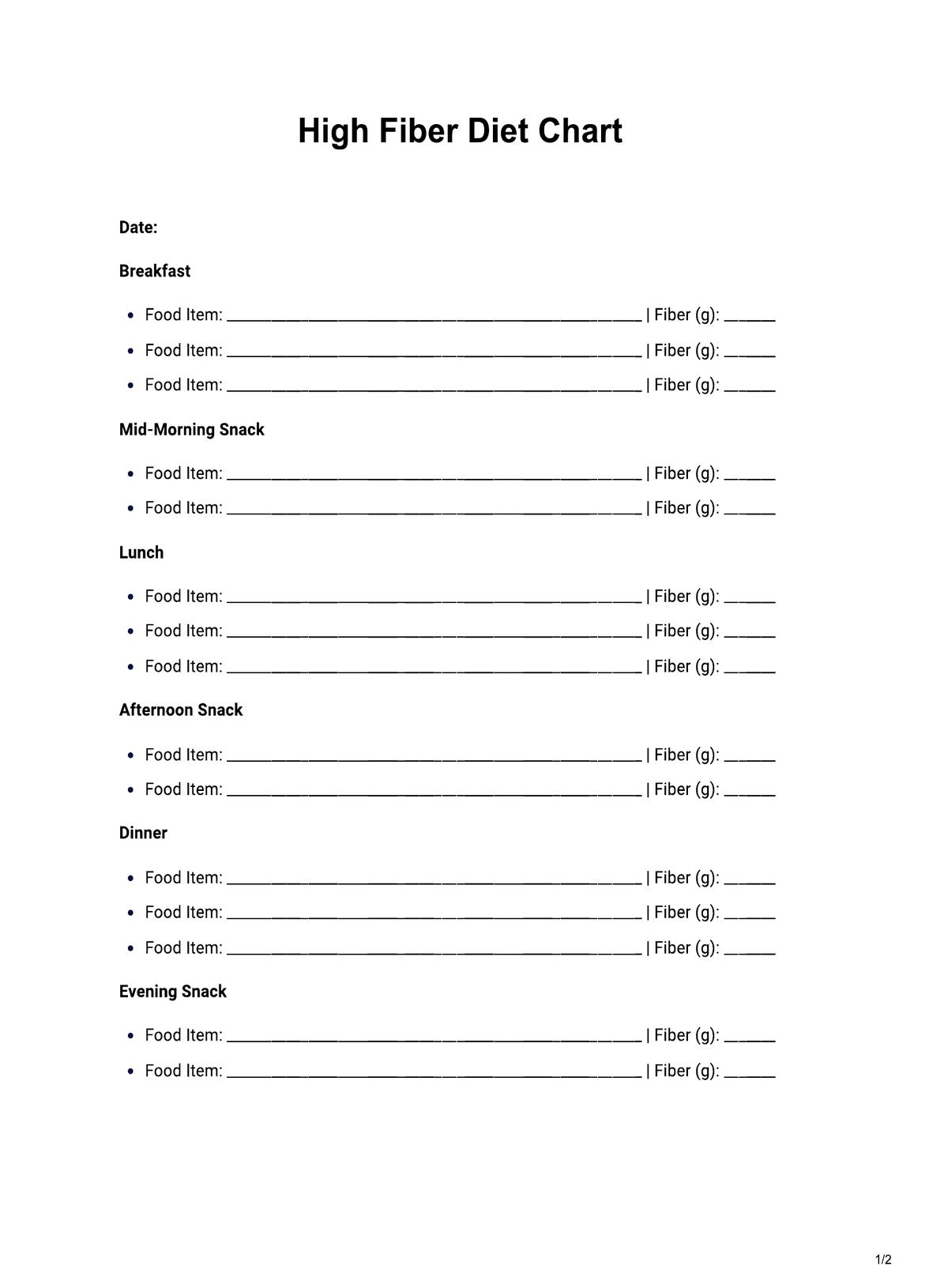A variety of individuals commonly request a High Fiber Diet Chart. Those seeking to improve their digestive health, manage weight, or regulate blood sugar levels often find this chart useful. Healthcare professionals, such as dietitians, nutritionists, general practitioners, and health coaches, frequently recommend this chart to their clients or patients. It's also sought after by individuals with specific dietary needs, like those with irritable bowel syndrome, diabetes, or heart disease, who require a fiber-rich diet for health management.

High Fiber Diet
Explore our High Fiber Diet Chart with a detailed example, perfect for daily tracking. Download your free PDF guide now and start your journey to better health.
High Fiber Diet Template
Commonly asked questions
High Fiber Diet Charts are used to plan, track, and assess dietary intake, specifically focusing on fiber. Individuals use these charts to log their daily food consumption, noting the fiber content of each item. This practice helps ensure they meet their daily fiber requirements, crucial for good digestive health and overall well-being. In a professional setting, health and life coaches use these charts as client management tools, aiding in dietary assessments and providing tailored nutritional advice.
The charts also serve an educational purpose, helping users understand the fiber content in different foods and how to incorporate them into a balanced diet.
The duration for using a High Fiber Diet Chart can vary based on individual goals and needs. For some, it might be a short-term tool to understand their dietary fiber intake and make necessary adjustments. Others might use it as a long-term monitoring tool, especially if they have ongoing health conditions like diabetes or high cholesterol that benefit from a consistent high-fiber diet. Daily usage only takes a few minutes to log meals and calculate fiber intake, making it a convenient addition to one’s daily routine. For sustained benefits, using the chart consistently to understand and improve dietary habits is recommended.
EHR and practice management software
Get started for free
*No credit card required
Free
$0/usd
Unlimited clients
Telehealth
1GB of storage
Client portal text
Automated billing and online payments











